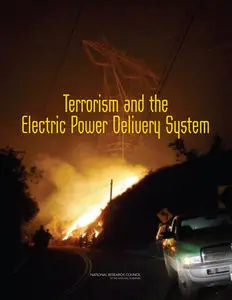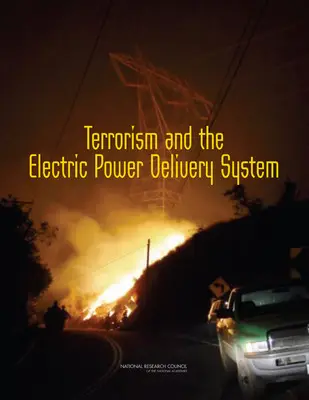Terrorism and the Electric Power Delivery System
Committee on Enhancing the Robustness and Resilience of Future Electrical Transmission and Distribution in the United States to Terrorist Attack; Board on Energy and Environmental Systems; Division on Engineering and Physical Sciences; National Research Council
NAS Press | 2012 | ISBN: 0309114047 9780309114042 | 165 pages | PDF | 6 MB
Committee on Enhancing the Robustness and Resilience of Future Electrical Transmission and Distribution in the United States to Terrorist Attack; Board on Energy and Environmental Systems; Division on Engineering and Physical Sciences; National Research Council
NAS Press | 2012 | ISBN: 0309114047 9780309114042 | 165 pages | PDF | 6 MB
This book focuses on measures that could make the power delivery system less vulnerable to attacks, restore power faster after an attack, and make critical services less vulnerable while the delivery of conventional electric power has been disrupted.
The electric power delivery system that carries electricity from large central generators to customers could be severely damaged by a small number of well-informed attackers. The system is inherently vulnerable because transmission lines may span hundreds of miles, and many key facilities are unguarded. This vulnerability is exacerbated by the fact that the power grid, most of which was originally designed to meet the needs of individual vertically integrated utilities, is being used to move power between regions to support the needs of competitive markets for power generation. Primarily because of ambiguities introduced as a result of recent restricting the of the industry and cost pressures from consumers and regulators, investment to strengthen and upgrade the grid has lagged, with the result that many parts of the bulk high-voltage system are heavily stressed.
Electric systems are not designed to withstand or quickly recover from damage inflicted simultaneously on multiple components. Such an attack could be carried out by knowledgeable attackers with little risk of detection or interdiction. Further well-planned and coordinated attacks by terrorists could leave the electric power system in a large region of the country at least partially disabled for a very long time. Although there are many examples of terrorist and military attacks on power systems elsewhere in the world, at the time of this study international terrorists have shown limited interest in attacking the U.S. power grid. However, that should not be a basis for complacency. Because all parts of the economy, as well as human health and welfare, depend on electricity, the results could be devastating.
Contents
Summary
1 The Electric Transmission and Distribution System as a Terrorist Targetwith
2 The Electric Power System Today
3 Physical Security Considerations for Electric Power Systems
4 Vulnerabilities of Systems for Sensing, Communication, and Control
5 Vulnerabilities Related to the People Who Run the Electric Power System
6 Mitigating the Impact of Attacks on the Power System
7 Restoration of the Electric Power System After an Attack
8 Strategies for Securing Crucial Services and Critical Infrastructure in the Event of an Extended Power Outage
9 Research and Development Needs for the Electric Power Delivery System
10 Recommendations
Appendixes
Appendix A: Statement of Task
Appendix B: Committee Biographical Information
Appendix C: List of Presentations and Committee Meetings
Appendix D: Acronyms
Appendix E: Summary of NERC Cyber Security Standards
Appendix F: Substation Configurations
Appendix G: Controlling Power Systems
Appendix H: R&D Needs for the Power Delivery System
true PDF with TOC BookMarkLinks



